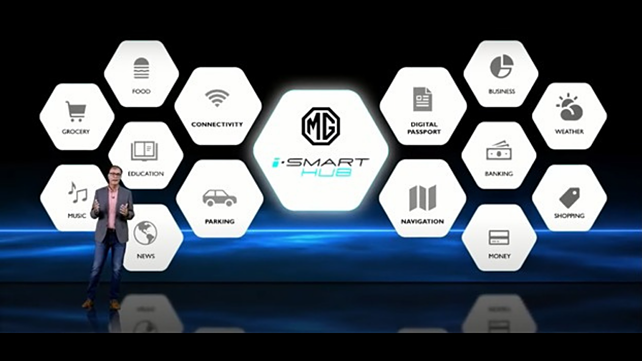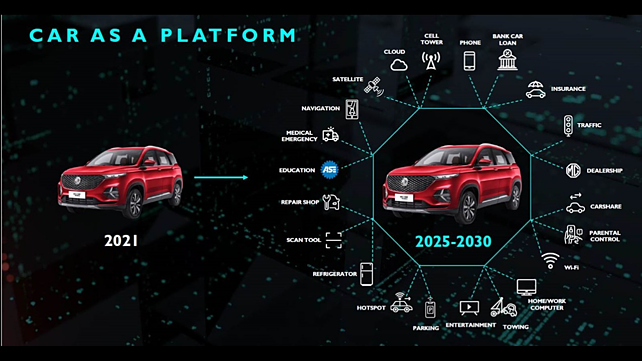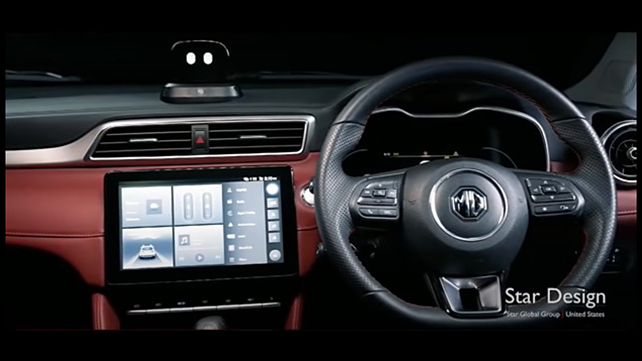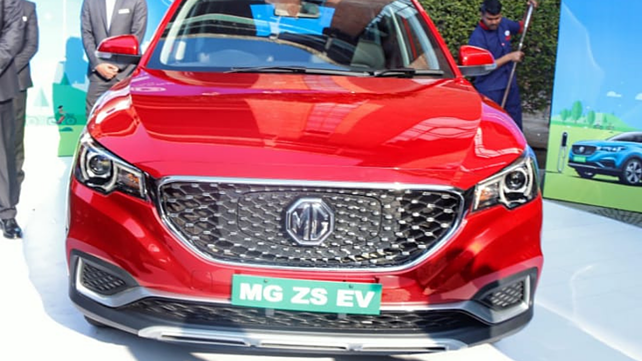“We work like a start-up. Start-ups need to be fast, agile, and technology agnostic,” Rajeev Chaba, President and MD, MG Motor said in one of the early interactions with media, when the company was in the set up phase in India and was planning to launch its first SUV Hector in India.
For the past few years, the global megatrends of connected, electric, shared, and autonomous were buzzwords of industry conferences and expert presentations, offering a sneak peek into where the world is moving. Fast forward now, in the last couple of years automobiles have evolved at a much faster rate than expected.
Over the years, the preference of Indian consumers too has been fast evolving and purchasing a car is not just about the power, mileage, and torque anymore. Rather, people are preferring cars that are tech-enabled and can perform tasks to make driving more convenient and pleasurable.
SAIC-owned MG Motor India has been striving to deliver on these global trends, and the three SUVs the company has launched in India till date is proof of that strategy. In fact, its upcoming product – the mid-size SUV Astor – will come with a personal assistant and autonomous Level 2 technology, a segment-first.

Moreover, the carmaker has not just focused on launching new technology-driven products but has gone an extra mile to evolve the ecosystem in India, which was lacking and also pushed the competition to adapt to the new technology trends.
Mobility Outlook takes a deep dive into MG Motor’s CASE strategy and how it is disrupting the market with its new positioning as an “auto tech” brand.
Creating an ecosystem
In early 2018, the company partnered with two dozen companies in the connected and electric world to create its unique supplier ecosystem. This included companies such as Adobe, Bosch, Cognizant, SAP, Airtel, TomTom, and Unlimit.
MG also invited start-ups and innovators to build innovative mobile applications and experiences and offered INR 25 lakh grant under MG Developer Program & Grant. At present, the company is actively working with more than 180 start-ups on different projects to make mobility smarter.
Connected SUV: Internet Inside!
MG Hector was the first SUV in India that came with an embedded SIM to offer connectivity. This enabled the Hector to communicate with its own cloud and service provider, in addition to getting over the air updates. The first carmaker in India to introduce M2M (machine-to-machine) connectivity in cars, MG has so far sold 68,947 ‘internet cars’ since the Hector was launched in 2019.
The company believes that cars are not just modes of transportation moving from one place to another but it is now more about experiences.
Gaurav Gupta, Chief Operating Officer, MG Motor India in a recent interaction with Mobility Outlook said, at present, customers are not talking about horsepower but talking about new technology. “As an auto tech brand, we are trying to provide a complete connected ecosystem to the consumer through our i-SMART and CaaP (Car as a Platform), which enables a smarter driving experience by leveraging Artificial Intelligence (AI).

This service will offer opportunities to all types of developers to create applications, services, and subscriptions for MG car owners.
CaaP will provide consumers with conveniences like assisting you with ordering your favourite brew or even make you laugh. It will answer all your questions and even reserve a parking spot for you. Not just that, the car will also reward you by saving premium on insurance depending on your driving style.
The i-SMART technology essentially combines hardware, software, connectivity, services, and applications to make the driving experience easier, smoother, and smarter.
The company has also introduced Natural Language Understanding (NLU) which adapts to Indian-English accents and pronunciation. Similarly, the operating system can be upgraded through OTA updates, which can give a new look to the screen, themes, applications, and entertainment content.
These technologies will be further enhanced in the upcoming MG Astor slated to launch in Q4 FY22. The SUV will house a personal AI assistant by the American firm ‘Star Design’. It depicts human-like emotions & voices and can give detailed information on every topic through Wikipedia.
Chaba said Astor is a step further and a catalyst for disruption with first-in-the-industry and best-in-class features that customers only get in premium/luxury segments. “With a relentless pursuit of innovation and software at the heart of the production, our vehicles will continue to provide a smarter and safer driving experience by leveraging AI,” he added.

Astor owners will also get access to music on the JioSaavn app along with the industry-first feature of reserving a parking slot through a head unit (powered by Park+ in select cities, to begin with) in the car. In addition, CaaP will create various possibilities that will evolve with time, creating a safer and smarter driving experience.
Autonomous technology not just confined to luxury cars
After introducing Level 1 autonomous features on its premium Gloster SUV, MG Motor is now taking a step forward by bringing in Level 2 autonomous technology on the Astor. Mid-range radars and a multi-purpose camera will power the autonomous Level 2 MG Astor to aid a series of advanced driver-assistance systems (ADAS).
These include Adaptive Cruise Control, Forward Collision Warning, Automatic Emergency Braking, Lane Keeping Assist, Lane Departure Warning, Lane Departure Prevention, Intelligent Headlamp Control (IHC), Rear Drive Assist (RDA), and Speed Assist System amongst others.
While Level 2 autonomous technology has been seen in luxury cars like the Volvo XC40, MG Motor will provide the technology at less than half of their price, the company said.
To iterate, there are up to five levels of autonomous driving. Level 2 enables cars with ADAS that can simultaneously control steering and speed.
Focus on EVs
After mass car brands Hyundai Motor India and Tata Motors introduced EVs in the market, MG Motor launched ZS EV with a range of 419 km. But even before the launch of ZS EV, the company partnered with dozens of companies from software development, charging infrastructure, power electronics, and battery recycling.

The company has tied up with companies like Delta Electronics India, Exicom Tele-Systems, e-Charge Bays, Fortum Charge & Drive India, Advanced, liquid-cooled NMC (Nickel Manganese Cobalt) battery from CATL, UAES (a subsidiary of Bosch), Infineon Technologies AG, and Umicore for battery end life cycle.
Moreover, the company has partnered with bodies like ASDC and premier institutes such as IIT Delhi for skill development in the EV space.
Shared mobility
MG Motor India also has a partnership with Zoomcar and ORIX to offer subscriptions of its cars. The company utilizes the end-to-end vehicle leasing technology from Zoomcar, which chooses ORIX as its vehicle deployment partner.
Conclusion
MG Motor’s strategy for the Indian market is clearly one that is looking at building an ecosystem around suppliers, software & service providers, academia, and start-ups, among others through the introduction of future technologies. Gradually, but surely, the company is unfolding its technology offerings through its products, with a promise of rolling out further technologies making the consumers’ journey more comfortable and convenient.